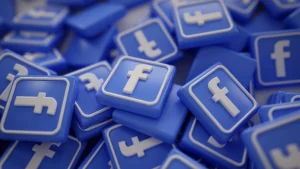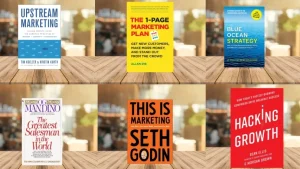In this competitive environment, different marketing strategies are available today, which can help the organization reach its audience effectively. The battle between digital and traditional marketing continues, with brands now trying to find the right way to attract customers, generate sales, and build brand awareness.
Traditional marketing incorporates television ads, billboard advertisements, radio, and anything related to classical print media that has functioned for centuries. Digital marketing, on the other hand, utilizes social media, SEO, content marketing, and PPC to precisely target across digital channels.
Which one’s better, though? The answer varies based on business goals, target market, and budget. This article breaks down the key differences between the two, as well as the advantages and disadvantages of both, thereby helping you to decide if you wish to go digital, stay traditional, or take a hybrid approach for larger effectiveness.
What is Digital Marketing?
It is about the art and science of how you promote your product or services over digital channels. Digital marketing is a contemporary version of a megaphone that amplifies the voice of any brand across the internet. However, it is most recently social media channels like those on Facebook or Instagram and even online search engines.
Digital marketing mix key elements comprise- search engine optimization (SEO), pay-per-click services (PPC), content marketing, email marketing, and social media marketing. The importance of these tools varies depending on whether the goal is bringing traffic to the website, awareness of the brand, or conversion from a potential customer to an actual one.
Pros:
- Cost-effective for all business sizes.
- Measurable and data-driven insights.
- Ability to target audiences precisely.
Cons:
- Can be overwhelming for newcomers.
- Requires constant updates and optimization.
- High competition in the digital space.
What is Traditional Marketing?
Traditional marketing is the classic way of promoting products or services through offline channels, such as billboards on your way to work, newspaper advertisements that you glaze over while eating breakfast, and radio jingles you get stuck with. This is mundane, yet this form of marketing can be important for small local businesses and older audiences during these days of digital transformation.
Examples of these traditional marketing channels are television commercials, radio ads, print media (newspapers and magazines), direct mail, and billboards and posters in outdoor advertising. All these methods have survived over time because they provide the only tangibles to establish confidence in audiences.
Pros:
- Well-established and trusted.
- Tangible and memorable (e.g., billboards or magazine ads).
- Broad reach, especially in certain demographics.
Cons:
- High costs for production and distribution.
- Less ability to target specific audiences.
- Limited metrics for tracking effectiveness.

Digital Marketing vs Traditional Marketing: Key Differences
Marketing focuses on creativity but never misses out on other important factors. It should include elements such as price, availability, advertising, promotions, sales, and distribution. Though digital marketing, in all respects, provokes most of the marketing practices of the online world. The avenues in action include social networks, search engines, and emails. Compared to traditional marketing, it normally is more cost-effective and vastly measurable-focused on specific target audiences. Traditional marketing has its place offline. Some of the interesting ways of advertising are TV, radio, print, and billboards. Although it is often harder to quantify the success of such an activity and is costly when pitched against the cost of digital marketing, perhaps this is the one area where traditional marketing truly excels: it leaves powerful, eminent impressions.
For example, digital marketing carries with it a great advantage in that advertisers can engage in real-time engagement with campaign audiences and obtain visibility into analytics so that adjustments can be made right there and then on the operations of the campaigns. Traditional marketing incurs lower interactivity but builds trust and credibility among segments that are older or locally based. The choice here will depend on what you want to achieve, how much money you have, and who you are targeting. Today it is time efficient; most traders swear by a combination of both options.
Measuring ROI: Traditional vs Digital
One of the greatest advantages of digital marketing is its pretty exact way of measuring the Return on Investment (ROI). The business can track clicks, conversions, traffic to the website, and even customer activity in real time using tools such as Google Analytics, Facebook Pixel, and email tracking software. In this way, marketers can also change the campaign instantly for better performance.
There is no real-time tracking when it comes to traditional marketing. Of course, there are ways for companies to assess the effectiveness of a TV commercial or billboard through customer surveys or sales analysis, but they cannot determine exactly how many people responded to the ad. This presents a problem for optimizing campaigns or showing ROI.
For the ventures invested in data-driven decision-making, digital marketing is certainly the winner. Old forms of marketing, anyway, still have their places in brand recognition and credibility building, mainly to cater to the older audience in various industries.

Which Strategy Works Best for Your Business?
In judging between traditional marketing and digital marketing, one must consider the company goals, targeted audience, and, of course, the budget. Advertising in newspapers, billboards, or even a television commercial would work better for a wider audience that is offline. Such strategies work fine for established brands that need to build credibility and reach out to customers who do not engage online.
Suppose the audience being targeted spends most of its time on digital channels like social media, search engines, and emails. In that case, digital marketing becomes extremely cost-effective and trackable as opposed to traditional marketing.
PPC ads, SEO, and content marketing allow limited-budget businesses to target the results and analyze ROI. Therefore, an effective mix works for many companies; traditional marketing creates brand awareness while digital converts and engages new clients. Hence, the strategy would yield the highest growth potential for extending the reach and development of the business.
Conclusion
To conclude, both digital marketing and traditional marketing have their advantages and disadvantages depending on what the company is looking for. Digital marketing is a way of reaching audiences online and measuring performance in real time. Measurement, targeted specificity, and low-cost options are great trademarks of this form of marketing. Traditional preferable works when one talks about audience reach, visibility, etc., specifically in sectors less active on the digital front.
A fruitful marketing strategy involves defining the audience and then employing the best of both worlds. While modern times rely heavily on digital marketing for growth, traditional marketing is always still useful in creating trustworthy recognition for businesses in some industries.
Read more articles on Marketing strategies, including the article titled digital marketing vs online marketing, to learn more about the subject.











